Welcome to 2013! It’s not only a new year, it is a new age. Although the Mayans started it, I think it is only fitting that the rest of us join in. In business, I declare that we are entering the age of Intersectionalism! No longer will one discipline or idea have the scope to move business, society, civilization, and individuals forward. Nor can we simply be generalists. We must activity bring together different ideas, disciplines, knowledge domains and let them impact each other to create something new, bigger, more robust and responsive to the needs of the situation.
I began the practice of Intersectionalism in 2005, totally unaware of its potential, and find that intersections of five are the perfect size. So let me begin the new year describing the business intersection that I am most passionate about – the intersection that creates the Agile Enterprise. Lets take a look.
First let me admit that I have been behind the curve on this one. I was so wrapped up in trying to create adaptive organizations that I missed the whole agile movement. There now exists an extensive body of literature that I am loving and leaders, we need to get up to speed fast.
Why? Because this movement is replacing Fredrick Taylor’s “Scientific Management.” To be clear, it’s not dead yet! But the Agile Manifesto started an alternative way of working collectively and in true collaboration that is as right for today’s environment as Taylorism was at the beginning of the Industrial Revolution.
More importantly, Agile conceptually creates an intersection that has room for the key management theories of the day (Figure above).
The Agile Enterprise
This intersection brings together five big ideas to create a workplace environment that really rocks!! It has the capacity to address, and maybe even solve, the enormous challenges humankind (and by default the planet) faces. But capacity is not capability…that still has to be taught, learned, implemented, embedded, and enacted. No small task for our Scientific Management mindset!
Systems Thinking: Systems are the dynamic interactions that produce what we “see” as cause-and-effect events. Without a systems mindset we believe the obvious and miss the root causes (subtle feedback loops, unintended consequences, and mental models) that actually create reality. From a systems perspective we can attain value on the global level, but it comes at the price of optimization at the local level. This is a tough concept for leaders and managers who have been taught that the whole equals the sum of the parts, and have been optimizing parts their whole career. It means a whole new way of decision-making, resource allocation, portfolio management, and strategic planning. For ways to do this contact Pegasus Communications, malpert@pegasuscom.com, 781-398-9701. Recommended reading includes: Peter Senge, The Fifth Discipline, Russell Ackoff et al, Idealized Design, and Nonaka and Takeuchi, The Knowledge-Creating Company.
Agile Framework: This framework reorients what we do and how we do it. It is a way of working that engages employees, builds trust between people as well as on the organizational level, and it thrives in complex environments – there, that takes care of the top three challenges of management today! The best way to introduce this framework is the Agile Manifesto:
We are uncovering better ways of developing software by doing it and helping others do it. Through this work we have come to value:
Individuals and interactions over processes and tools
Working software over comprehensive documentation
Customer collaboration over contract negotiation
Responding to change over following a plan
That is, while there is value in the items on the right, we value the items on the left more.
One key outcome of the Agile Framework is the process of Scrum, both have much to contribute to organizations, leaders, and business at all levels. For now, let me admonish you to “BE agile rather than do agile.” To learn how 1) read the full manifesto, www.AgileManifesto.org, 2) visit the Agile Alliance, www.agilealliance.org, and 3) and take a course from the Scrum Alliance, www.scrumalliance.org. Both alliances have national meetings, so leaders you can learn by submersion if you are courageous.
Lean Processes: This discipline took on new meaning for me when I read Mike Rother’s book Toyota Kata. Lean is based on two pillars, Respect for People and Continuous Improvement, which create a system of lean processes. Starting to see the intersection? Lean and systems combine to create thinking tools that allow you to map your business and discover where you are adding value and where you are allowing waste (time and effort) to dominate. Lean establishes what I think of as “the working surface” within organizations, the place where the saw meets the wood, the mind meets the challenge, the process meets the target condition. There is so much written about lean that I will only reference Rother’s book and send you to his presentations (http://www.slideshare.net/mike734).
Design Thinking: I could wax eloquent about this domain and how it defines the intersection. Design Thinking contributes significantly to how the other domains are performed. Let me also point out that this domain challenges the leadership techniques that have been engrained in leaders today. Readers, pick up Roger Martin’s The Design of Business, Stickdorn and Schneider (eds.) This is Service Design, and IDEO’s Human-Centered Design Tool Kit (online free at http://www.hcdconnect.org/toolkit/en). For courses, Human Centered and Service Design is popping up everywhere and watch for leaders like Tim and David Kelley and Thomas Lockwood speaking at OD and leadership conferences.
Leadership and Management: The last component of this intersection is the one that has to adopt the other four to make a real difference. Yikes! That means you dear reader. As we look at this intersection we see that how and who are tightly coupled. Rother covers this in his book in the section on Toyota’s Coaching Kata which is integral to the achievement of continuous improvement. Agile and Scrum have a defined role for coaches and mentors. And no where is this better described than Dan Pinks book, Drive. But the leader of the pack is Gary Hamel, see his book What Matters Now, and more importantly spend time on the Management Innovation eXchange, http://www.managementexchange.com/.
This is a lot to take in, and it is the topic of my contribution to this blog for the forseeable future. For those of you with questions, comments, or needing help contact me directly.
Dr. Carol Mase, carol.mase@cairnconsultants.com, 215-262-6666
PS: my website is completely out of date due to this new Age
 Sections of this topic
Sections of this topic

















